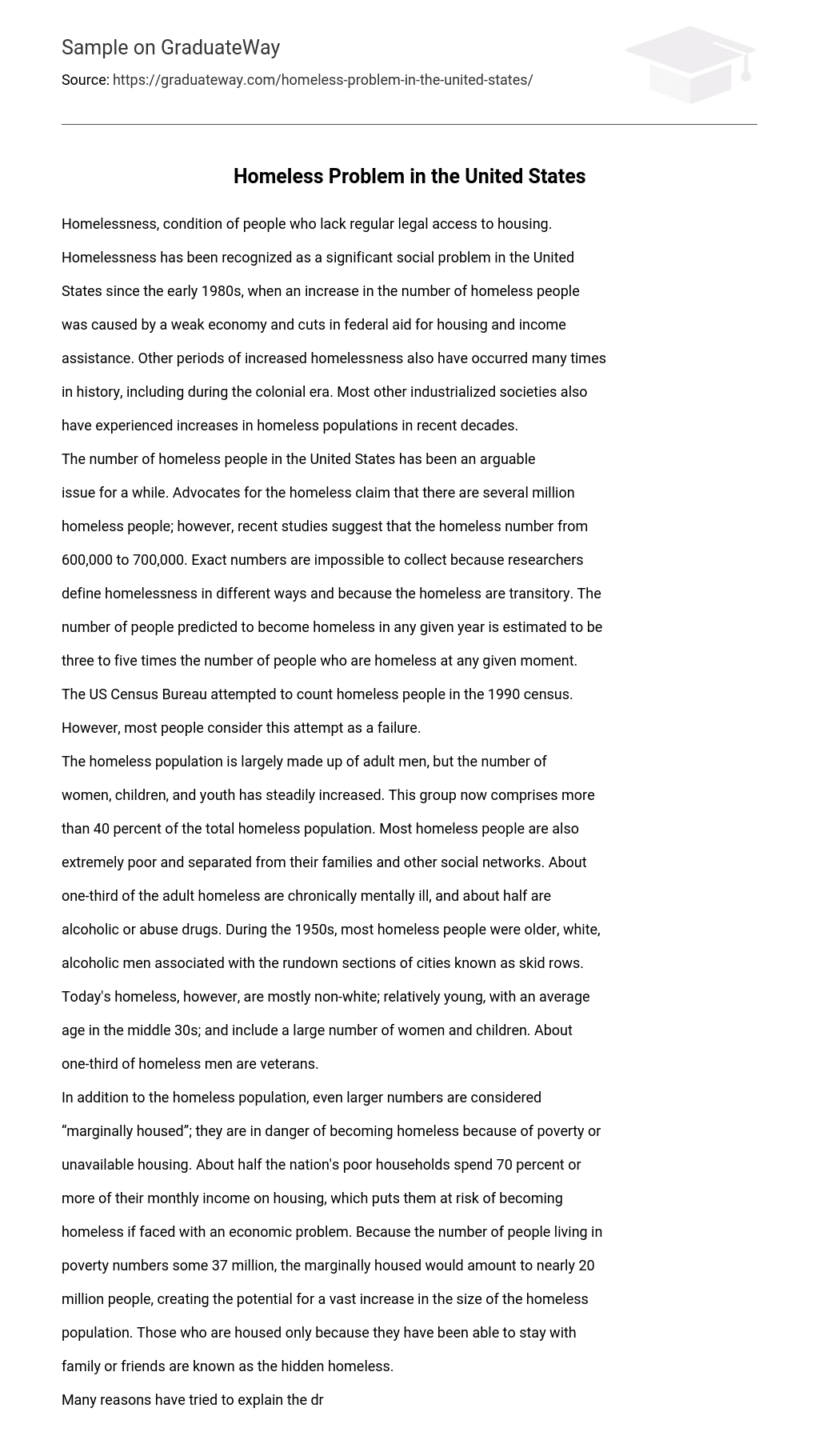Homelessness, condition of people who lack regular legal access to housing. Homelessness has been recognized as a significant social problem in the United States since the early 1980s, when an increase in the number of homeless people was caused by a weak economy and cuts in federal aid for housing and income assistance. Other periods of increased homelessness also have occurred many times in history, including during the colonial era. Most other industrialized societies also have experienced increases in homeless populations in recent decades.
The number of homeless people in the United States has been an arguable issue for a while. Advocates for the homeless claim that there are several million homeless people; however, recent studies suggest that the homeless number from 600,000 to 700,000. Exact numbers are impossible to collect because researchers define homelessness in different ways and because the homeless are transitory. The number of people predicted to become homeless in any given year is estimated to be three to five times the number of people who are homeless at any given moment. The US Census Bureau attempted to count homeless people in the 1990 census.
However, most people consider this attempt as a failure. The homeless population is largely made up of adult men, but the number of women, children, and youth has steadily increased. This group now comprises more than 40 percent of the total homeless population. Most homeless people are also extremely poor and separated from their families and other social networks. About one-third of the adult homeless are chronically mentally ill, and about half are alcoholic or abuse drugs. During the 1950s, most homeless people were older, white, alcoholic men associated with the rundown sections of cities known as skid rows.
Today’s homeless, however, are mostly non-white; relatively young, with an average age in the middle 30s; and include a large number of women and children. About one-third of homeless men are veterans.
In addition to the homeless population, even larger numbers are considered “marginally housed”; they are in danger of becoming homeless because of poverty or unavailable housing. About half the nation’s poor households spend 70 percent or more of their monthly income on housing, which puts them at risk of becoming homeless if faced with an economic problem. Because the number of people living in poverty numbers some 37 million, the marginally housed would amount to nearly 20 million people, creating the potential for a vast increase in the size of the homeless population. Those who are housed only because they have been able to stay with family or friends are known as the hidden homeless.
Many reasons have tried to explain the dramatic increase in the number of homeless people in the 1980s and 1990s. The total poverty rate tended to increase throughout this period, and this was especially true in the inner city areas where most homeless people live. At the same time, the supply of low-income housing declined in some cities. Waiting lists for public housing are often many years long and increases in welfare payments have not kept pace with inflation. Among other factors implicated in the trend are changes in the treatment of the chronically mentally ill, drug use, the inability of some families to support dependent adult members, and an increasing rate of violence against women.





